Tokyo restaurant offers “DIY Tempura Bowls,” so of course we had to go check it out
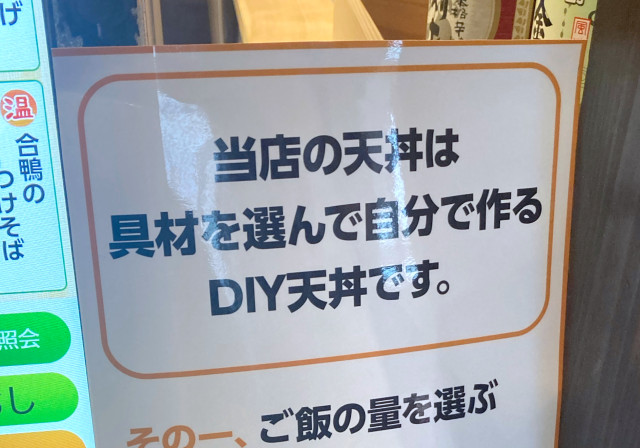
Do you cook it yourself? Put it together yourself, buffet style? What does it mean?!?!
When you see the phrase “DIY” you probably think home projects or crafts, projects you can do yourself that are somewhat fun, or at least a little bit fulfilling, like that time we plastered our car (sort of). At least, that’s what our Japanese-language reporter Mr. Sato thinks when he sees it. Imagine his surprise when he saw the phrase in use at a restaurant!
Wamin no Kodawari Noren-gai is a collection of food-stalls with an izakaya (Japanese pub) vibe in the Oimachi neighborhood of Tokyo, including such brands as Wang’s Garden (a Shichuan restaurant), Sushi no Wa (a sushi restaurant), and Yakiniku Kamimura Baijo.

Mr. Sato headed over on a weekday just after they opened for lunch at 11:30. At the entrance, a ticket machine, where you place your food order and pay, was waiting. Mr. Sato had hoped to enjoy food from each of the different food stalls, but it seems that lunch has a fixed menu of soba and tempura.
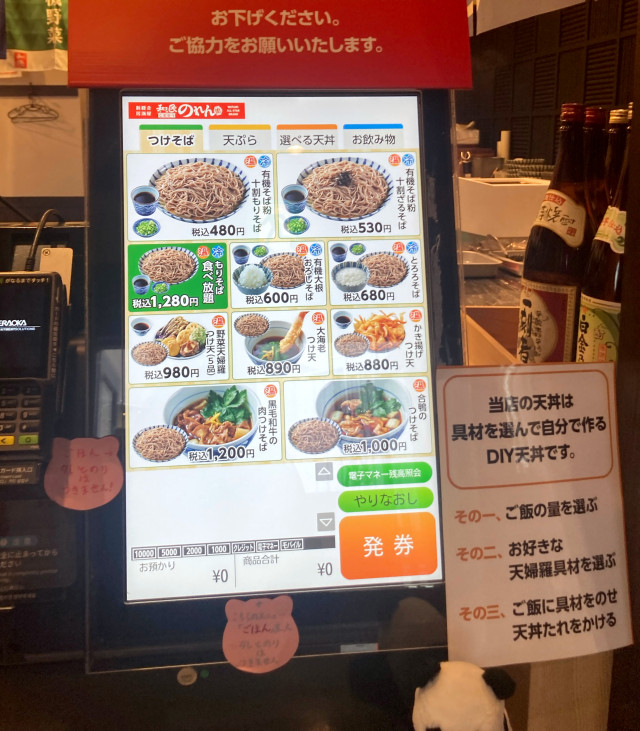
But just as he was resigning himself to having a somewhat ordinary lunch, a side to the sign caught his eye. It said…

“Our tempura bowls are DIY, so you can make your own by choosing what you like.”
In Mr. Sato’s estimation, “DIY” means “do-it-yourself,” so does that mean once you pick your tempura bowl toppings, you fry them yourself? Well, “fry-it-yourself” restaurants aren’t all that uncommon, so that wouldn’t be that surprising. Wamin no Kodawari Noren-gai sort of has that kind of casual vibe anyway.
“I mean, there could be the possibility that they’d let me into the kitchen to fry my own tempura…right?” Mr. Sato mused. “…Nah!”
No way would a restaurant kitchen let their customers in to use their inside-the-kitchen equipment. Still, there was no doubt there was some element of “do-it-yourself” involved, so Mr. Sato was interested to find out.
It turned out that, while his imagination ran away with him, the answer was just under the first part of the sign.
▼ “Step 1: Choose your rice size. Step 2: Chose your desired tempura ingredients. Step 3: Put your tempura on top of the rice and pour over tempura sauce.”
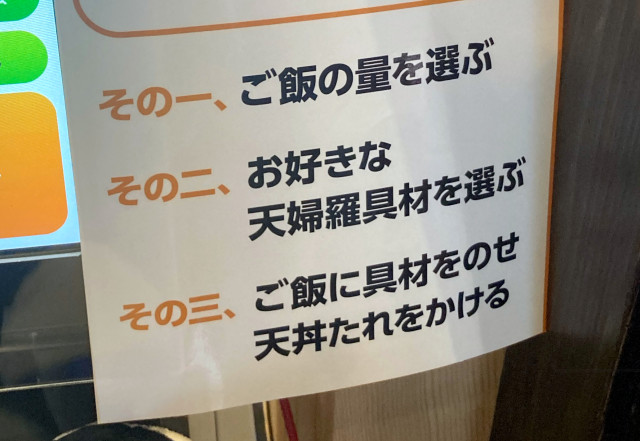
The only DIY element was that you could pick what type of tempura you wanted to have with your rice. That was slightly disappointing, but still sounded kind of fun, so Mr. Sato decided to do that.
The first step to building your own tempura bowl is to choose what kind rice you want, and how much. “Tempura Bowl Rice,” which has seaweed strips on top and tempura sauce on the side, comes in regular and large sizes, costing 300 yen (US$1.98) and 350 yen respectively. Plain rice is also an option, at 200 yen for regular and 250 yen for large, so that’s a good choice if you’re looking to keep your meal cheap.

Plain rice seemed boring, though, so Mr. Sato chose Tempura Bowl Rice. The next step is to choose your tempura toppings. Lotus roots, sweet potatoes, and shiitake mushrooms are just 100 yen each, so you can top your plain rice with those and have a vegetarian meal for 500 yen.
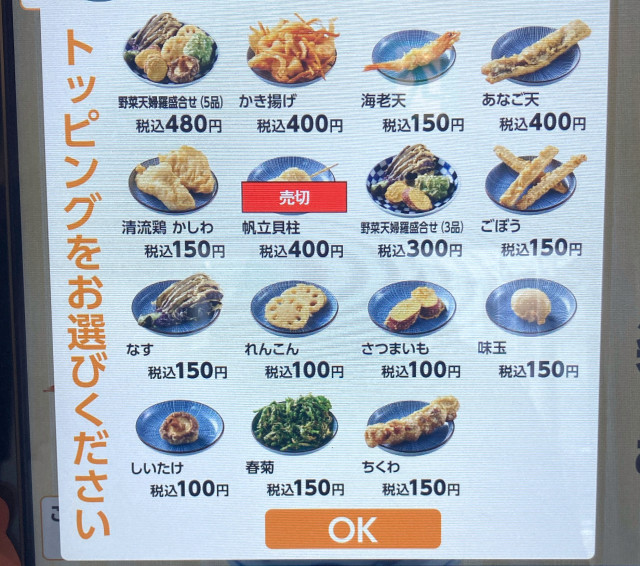
Of course, Mr. Sato wasn’t here for a cheap meal; he wanted a gourmet meal. So after selecting an exorbitant amount of food, here’s what arrived at Mr. Sato’s table:
▼ The tempura was placed on separate plates for some reason, so perhaps the last DIY element was to put your tempura bowl together?
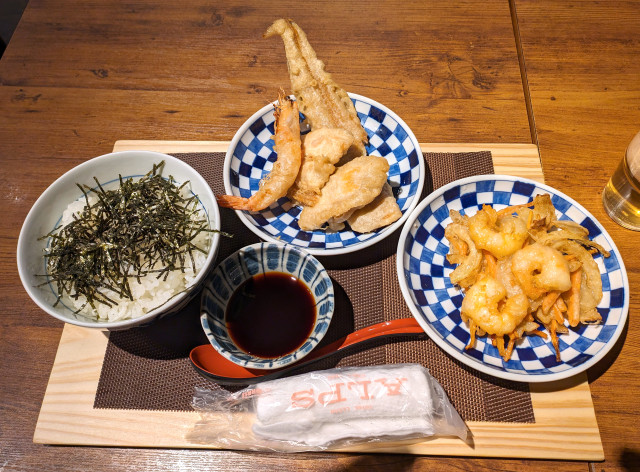
On the first plate was prawn tempura (150 yen), dark-meat chicken (150 yen), and anago (saltwater eel) (400 yen).
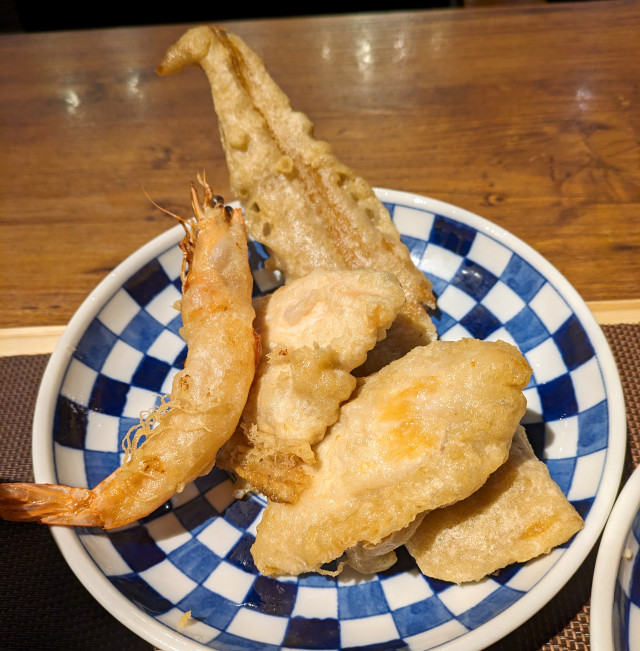
In Mr. Sato’s estimation, the anago was about 20 centimeters (7.9 inches) long, which was way longer than he’d anticipated. That was a pleasant surprise.
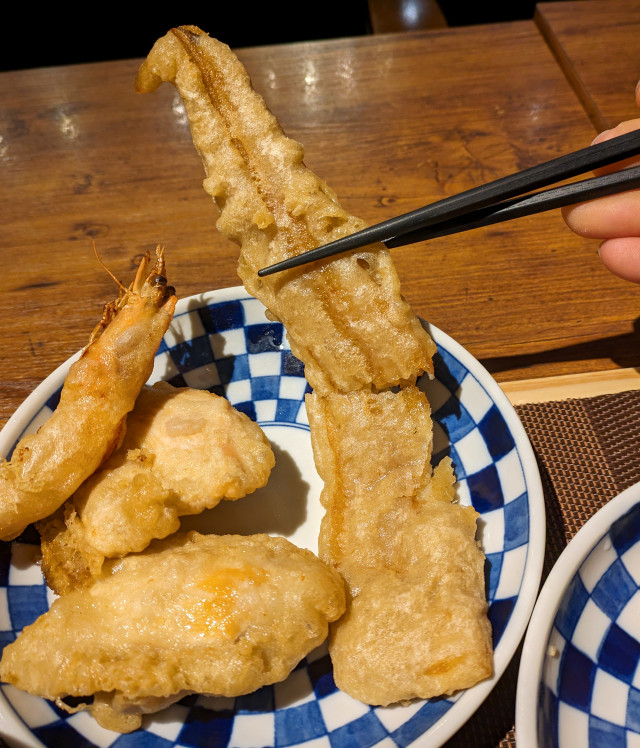
He also got kakiage (400 yen), a mix of tempura seafood and vegetables. It contained onions, carrots, and shrimp.
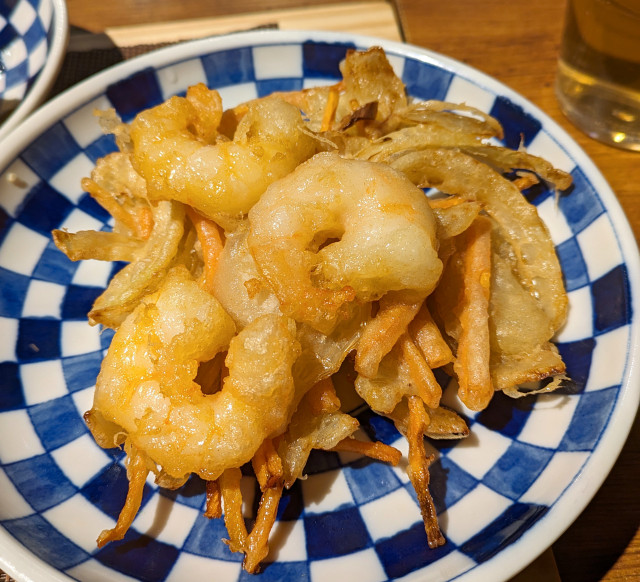
Never one to shy away from big food, Mr. Sato dumped all of that on top of his tempura rice. It barely fit in the bowl, and Mr. Sato realized he probably should have gotten a large rice, which comes in a larger bowl.
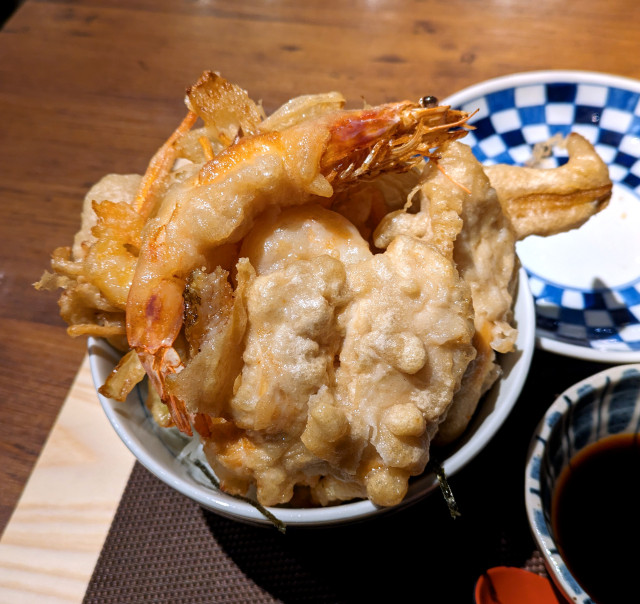
His first bite of the kakiage proved that the batter was crispy-crunchy and the interior piping hot. It really brought out the sweet and spicy flavor of the tempura sauce. Honestly, the tempura sauce is what tied the whole dish together, so Mr. Sato highly recommends you opt for tempura rice instead of plain rice. You can taste the 100-yen difference. Actually, he also wished they’d sell the sauce on its own so he could have extra.
And while he was making wishes, he also wished they sold dashi chazuke, hot broth poured over rice, which would be the perfect way to finish off this meal.
What the restaurant does have, though, is all-you-can-eat soba for 1,280 yen, which is clutch for big appetites. Paired with some tempura, it could be a super filling meal!
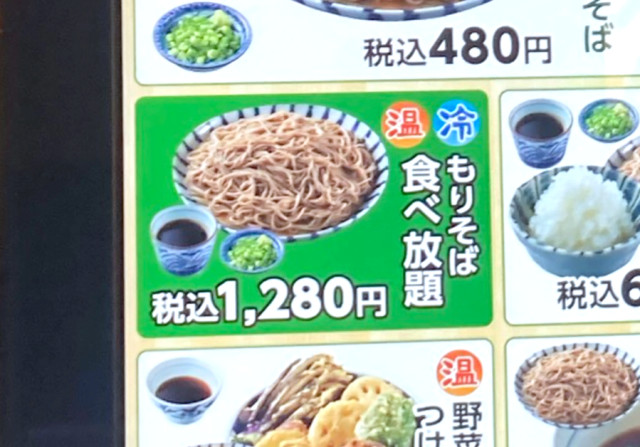
But don’t sleep on that DIY Tempura Bowl. It was super tasty, and you don’t actually have to fry it yourself, plus you have free choice of your toppings, so you can easily build the meal of your dreams.
Restaurant information
New Combined Izakaya Wamin no Kodawari Noren-gai / 新総合居酒屋 和民のこだわりのれん街
Tokyo-to Shinagawa-ku Higashi-Oi 5-17-2 Hayashi Building 1-2F
東京都品川区東大井5丁目17-2 林ビル1・2F
Open 11:30 a.m.-2:30 p.m. 4 p.m.-3 a.m. (Monday-Thursday), 4 p.m.-3 a.m. (Friday and days before a holiday), 3 p.m.-3 a.m. (Saturdays), 3 p.m.-11 p.m. (Sundays and holidays)
Images © SoraNews24
● Want to hear about SoraNews24’s latest articles as soon as they’re published? Follow us on Facebook and Twitter!
Credit:

0 comments: